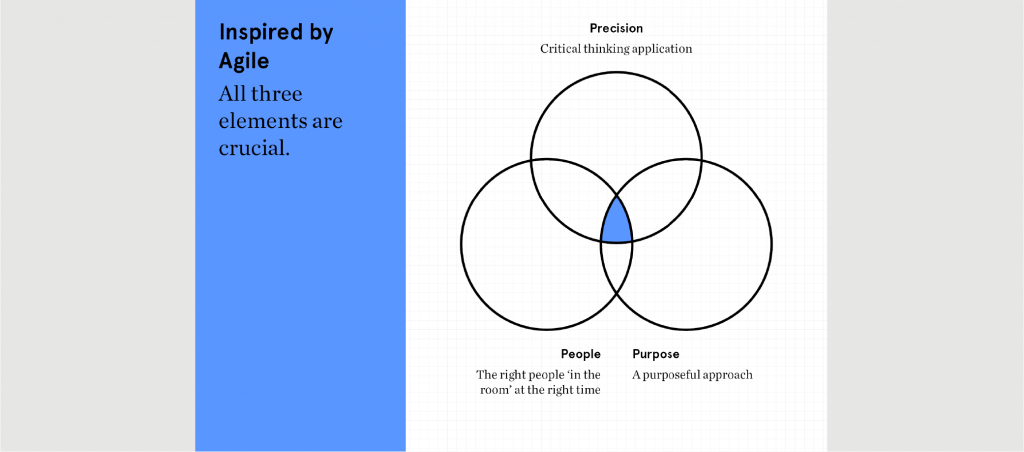Agile Inspiration
This year more than ever, our clients have told us they are being asked to drive both growth and profitability. They are being asked to do more but spend less. And meanwhile, internal resource is already stretched thin. Our response was to launch a series of events focused on Agile Insight.
We were thrilled by the turnout to our breakfast seminars last month and the amount of interest expressed by the industry off the back of them. With the rush up to the end of the year, many of our friends who wanted to attend couldn’t make it, so we have summarised a few of the learnings and takeaways for you here.
So what does being ‘Agile’ actually mean here?
Too often people see the term Agile as a shortcut for speed and responsiveness. These are of course key components in today’s market, but the fundamentals of Agile thinking are deeper, and getting it right for a project or business challenge means delivering in three key areas.
- Precision – being able to effectively deploy critical thinking
- People – having the right people involved at the right time
- Purpose – making sure the purpose is brutally outcome focussed
The result of getting these three things right means working in a way that is human-centric, flexible and fast while still driving to the right business outcome and being respectful of both time and resources.

Top tips for creating more Agile projects
It is important to find what works with your unique culture, but building the following key points into the approach will allow you to be inspired by Agile to take risks and drive change:
1 / Have small, stable, relevant teams – everyone with a purpose and all requirements assigned to a person
2 / Identify your key emotionally-invested stakeholder – involve them up front and invite them to stay involved
3 / Define the Core Question and break it down into clear ‘researchable’ components to maximise efficiency of time, effort and research spend
4 / Facilitate planning sessions with tightly defined agendas: right people, right process, right precision
5 / Have daily stand-up meetings: 10 minutes face-to-face to share what everyone did yesterday/is doing today/any blockers to success
6/ Keep planning simple, flexible and visible – consider having a planning wall
7 / Build in Review sessions after each phase – iterate learnings and consider what to keep/stop/start doing
9 / Keep it flexible. When things change, document the change and the impact – revise the Core Question, how it breaks down and the priorities/outputs
We encourage you to be inspired by Agile and to take risks and drive change through your business. If you’d like to learn more about how we can help please get in touch.




